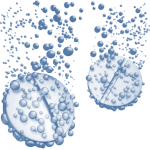Variation of phenolic content and bioactivity between the different organs of the Algerian Capparis spinosa L.
Hakima Beldi, Lynda Gali, Amel Benbott, Amel Boudechicha, Chawki Bensouici, Abdelouahab Yahia, Nadia Benzidane
Abstract:
El-Kabbar or Caper (Capparis spinosa L.) is a xerophilic shrub that has a great capacity to resist extreme environmental conditions and can therefore be of great interest for the discovery of new molecules. Thus, the present study evaluated the antioxidant, anticholinesterase, and antibacterial activities of the methanolic extract of different parts (leaves, stems, and roots) of Capparis spinosa L. DPPH, ABTS, CUPRAC, reducing power, and β-carotene bleaching test were adopted to study the antioxidant activity. The extracts were also examined for their inhibitory capacity on acetylcholinesterase (AChE) and butyrylcholinesterase (BChE) and for their antibacterial activity assessed by the disk diffusion method against four bacterial strains. The extracts have substantial levels of phenolic compounds mainly concentrated in the leaves. Significant antioxidant activity was displayed by the different plant organs, mainly the leaves which showed the strongest effect. This activity showed a strong correlation with their phenolic content. The different parts of the plant showed no AChE inhibition, while only the roots showed a slight BChE inhibition effect (IC50 = 150.77 ± 80.56 µg/mL). Moreover, all extracts were inactive against E. faecalis and K. pneumoniae, while only leaves and roots at 100 mg/mL exerted weak inhibition against E. coli and S. aureus. Extracts from this plant have shown. The results indicated that the methanolic extract of Capparis spinosa L. leaves possessed strong antibacterial and antioxidant properties and could be an important source of natural compounds for the development of new drugs.
Keywords: Capparis spinosa L., Antioxydant Activity, Phenolic Contents, Correlation, Anticholinesterase Activity, Antibacterial Effect.



